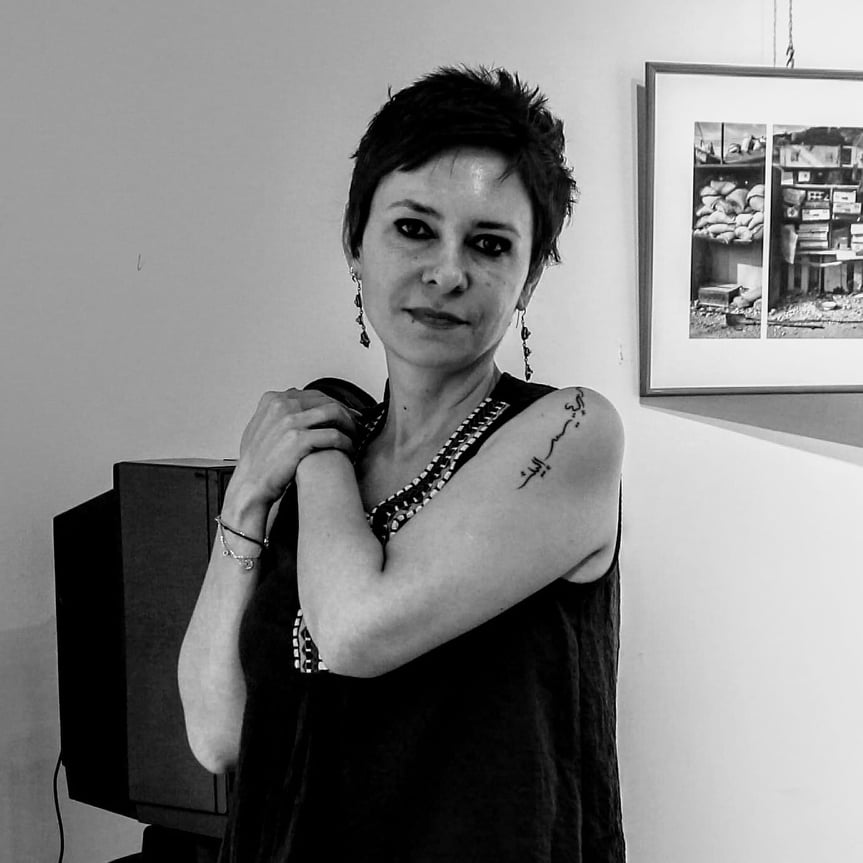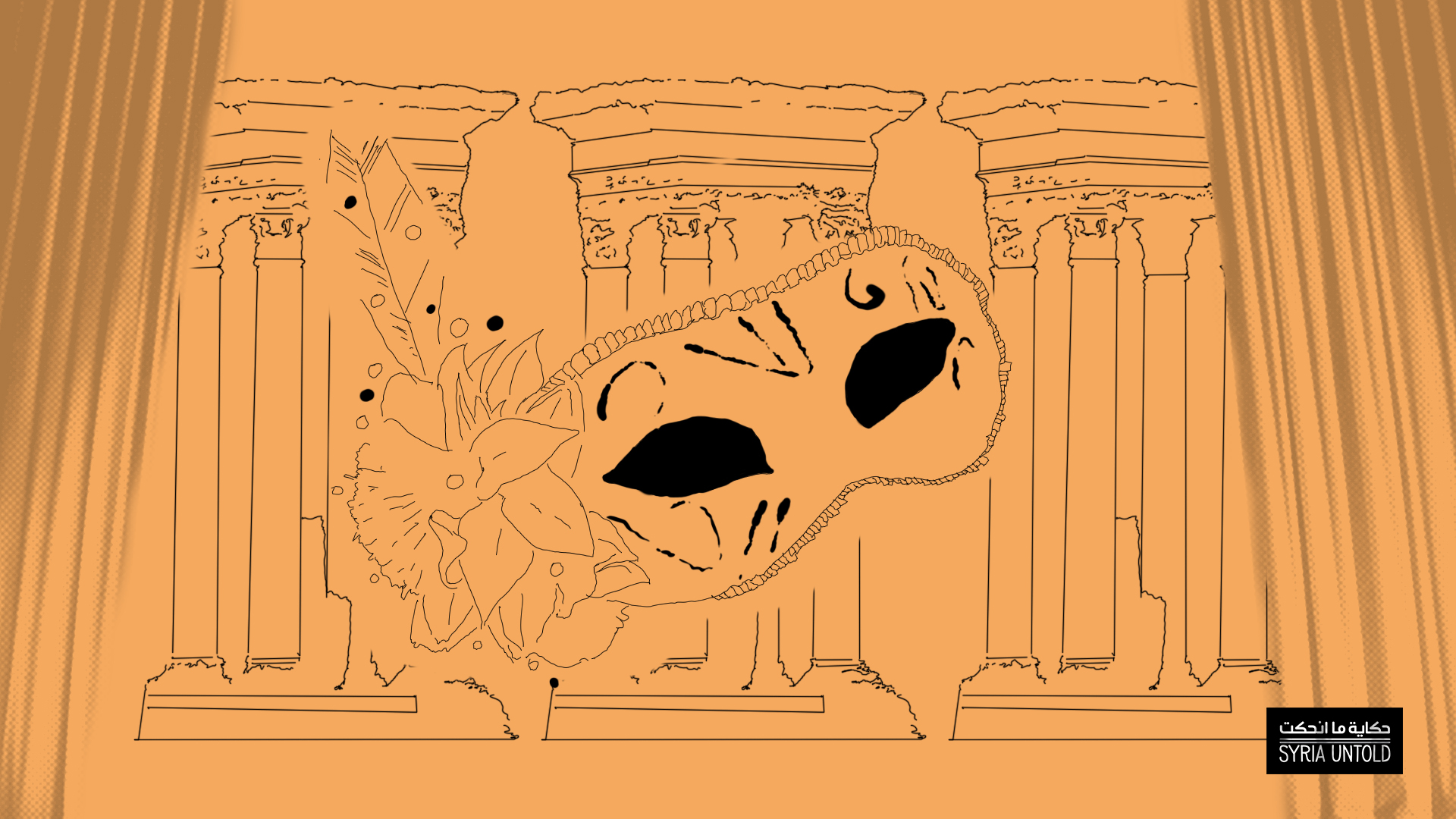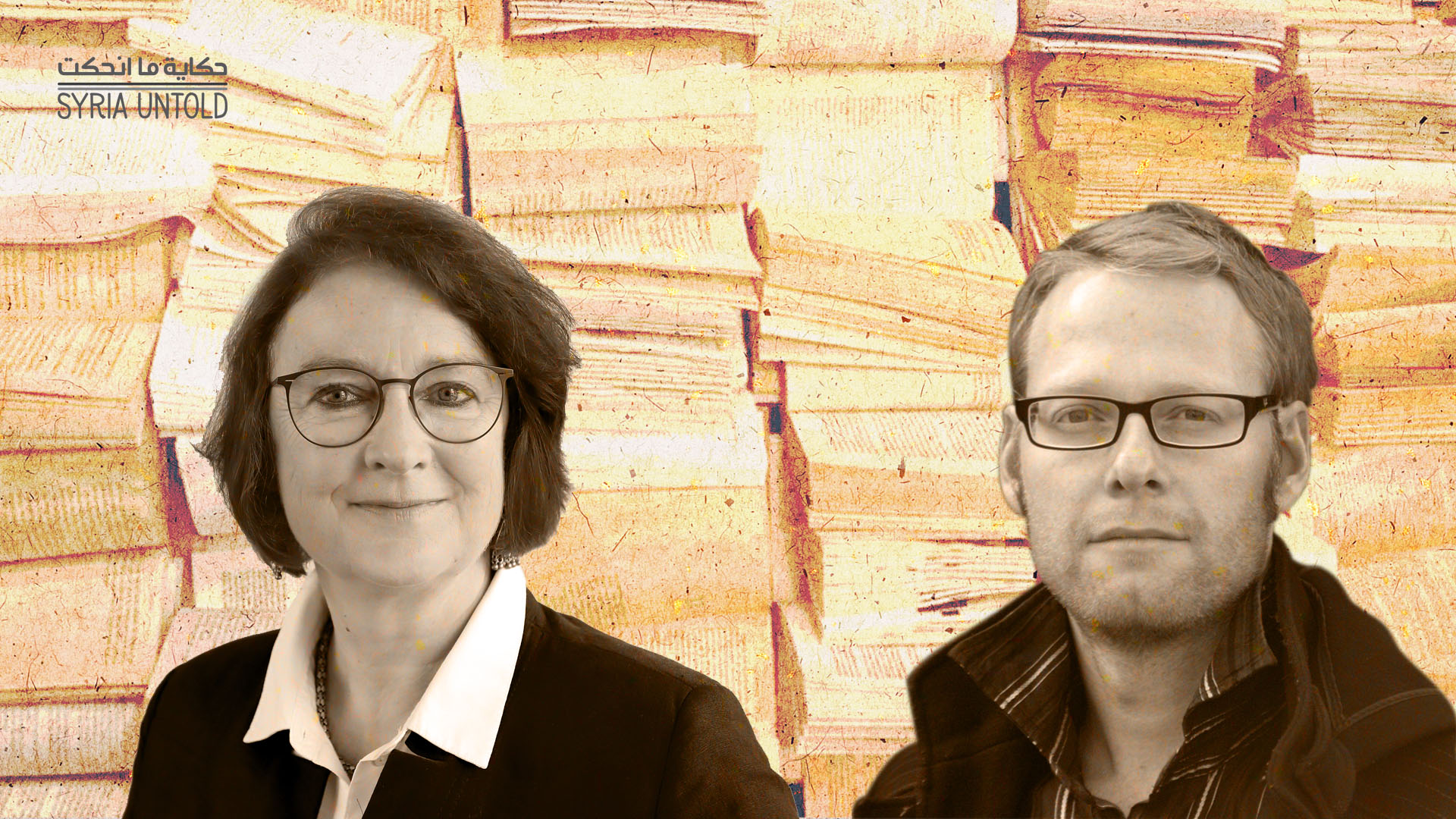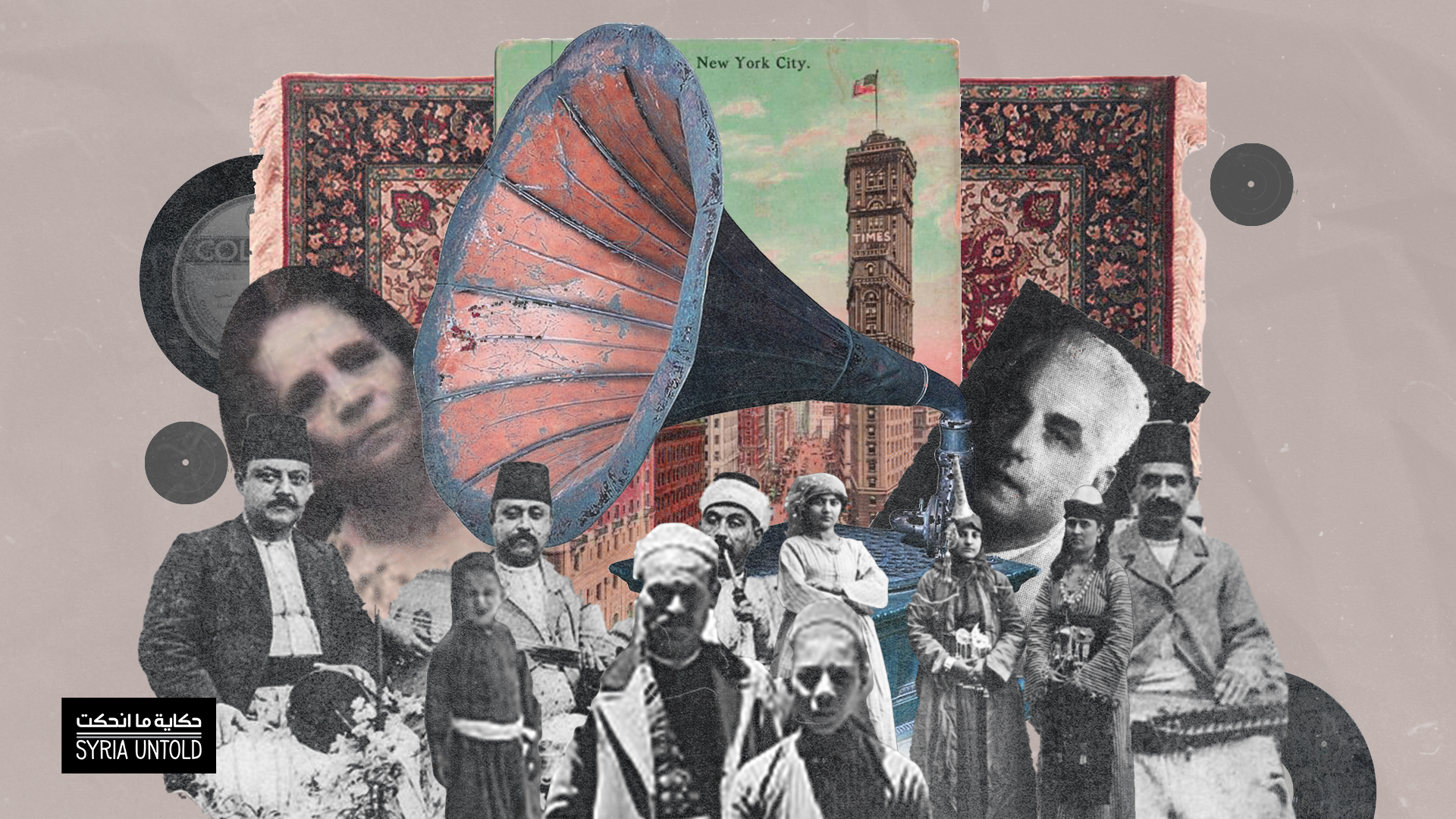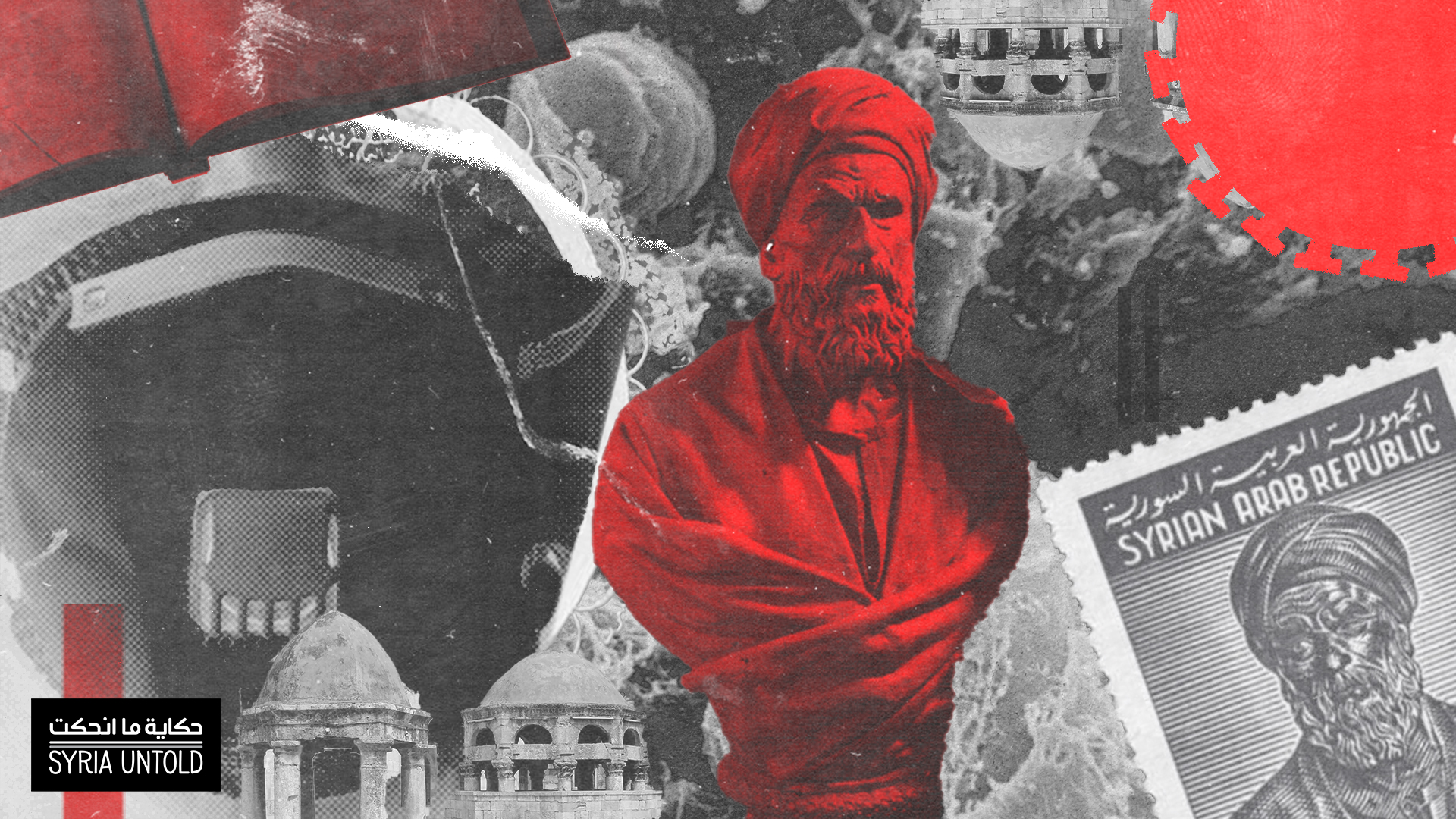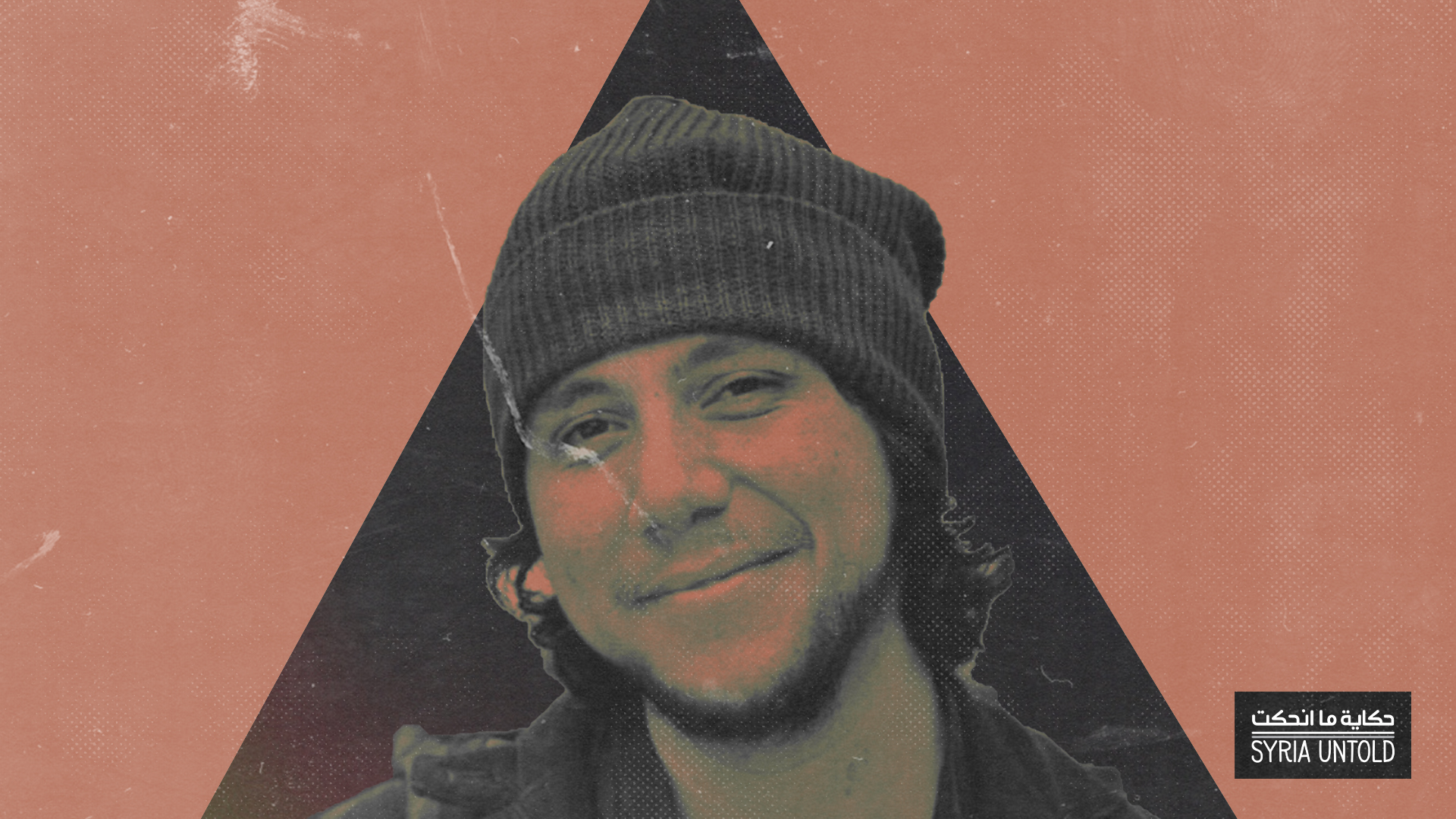This essay is part of SyriaUntold's series on Syrian theater. Read this piece in its original Arabic here.
Since the Syrian war erupted, official theatrical production has continued. The Directorate of Theaters and Music maintained its scheduled yearly plan, though the number of shows per season varied during the first years of security instability in Damascus amid the difficulty and risk of the commute for both theater workers and spectators.
With the new status quo, recognized theatrical traditions from before 2011 also changed. Shows were performed earlier in the day to account for checkpoints, transportation hurdles and lack of security. The almost constant power cuts and shortages of fuel oil used to operate generators forced theater workers to seek alternative plans, in case of a power cut during shows that relied on music and lighting.
Operating under the Directorate of Theaters and Music, the Children’s and Puppet Theater continued its productions unabated, with seasonal festivals held during spring and summer. Attendance varied depending on the security situation, commute, fuel crisis or weather.
The theater, especially during the first years of the war, became dangerous for technicians and actors who faced the risk of death at any minute on their way to and from work. Actress Susan Salman, sound technician Shadi Raya and director of programs at the Damascus Opera House Lama Fallouh were among the war’s victims. Several students at the Higher Institute of Dramatic Arts were injured as a result of shells that targeted the building several times. The theater itself remained a remote haven from everything happening on the outside, even if for a few hours.
The Damascus Opera House continued its opera productions, as well as music concerts and dance shows in its three halls. However, the venue did not host theatrical shows due to coordination with the Directorate of Theaters and Music, although both institutions are affiliated with the Syrian Ministry of Culture.
The theater itself remained a remote haven from everything happening on the outside, even if for a few hours.
The Higher Institute of Dramatic Arts continued to present its term graduation projects to spectators annually, amid remarkable presence. The shows were directed by names like Hasan Oweiti, Urwa al-Arabi, Bassam Koussa, Fouad Hassan, Fayez Kazak, Ghassan Massoud, Samer Omran, Jihad Saad, Abdel Menhem Amairi and others.
The commercial theater also staged several shows and ventured into producing a special genre where profit is based on the box office.
Migration and closed doors
During these 10 years, many Syrians steered clear of working in the theater, either because they left the country or because of low wages that could no longer offset the cost of transportation. In 2011, monthly wages amounted to 150,000 Syrian liras, remaining roughly the same until 2021 despite the currency plummeting to all-time lows. While some people retreated from theatrical work, new names emerged on the Syrian theatrical scene to make up for the shortage. They seized an opportunity that would not have been presented to them otherwise.
Current conditions of Syrian theater
28 May 2021
What did exile change in our narratives?
26 January 2021
Since the Damascus Theater Festival was suspended in 2010, Syrian theater has been isolated from the Arab and international artistic scene. With the onset of fighting, Syria was prevented from participating in international theatrical festivals because of restrictions on the Syrian passport and the inability of the Syrian Ministry of Culture to cover the travel costs, to reduce its budget. However, some shows managed to overcome the ban and made it, through personal efforts, to the Carthage Theater Festival. Among those shows were The Window (Al-Nafiza) by Majd Fedda, Statico by Jamal Shukeir, which received three awards, and Color Correction (Tasheeh Alwan) by Samer Mohammed Ismail, which won two awards.
Urwa al-Arabi’s City in Three Seasons (Madina fi Thalathat Fousoul), Ayman Zaidan’s Abduction (Ikhtitaf), Anna Akkash’s Them (Hounna) and Ajaj Salim’s Chemistry (Kimia) participated in several editions of the Arab Theater Festival, which the Arab Theater Institute holds in a different country every year.
The play Conjugal Confessions (I’tirafat Zawjiya) by Ma’moun al-Khatib reached the Cairo International Festival for Experimental Theater. With that, local Syrian theater regained some of the limelight for its productions outside its home country.
No cultural plan
The past decade has been marked by a lack of any cultural plan or a clear artistic répertoire of national theater represented by the Directorate of Theaters and Music, in line with the status quo. The artistic quality of shows varied, and the light for some of them dimmed in favor of others. Some names shone just once, then disappeared forever, while other names resounded in theater with every new season.
Most performed plays were adaptations of international scripts, some of which carried direct projections of the Syrian war, especially in its early years. Among these were Urwa al-Arabi’s Hamlet and About Love and Other Stories, Ayman Zaidan’s Abduction, Fabrika, and Chalk Circle (Daerat Tabashir), Ma’moun al-Khatib’s They Are All My Children (Koulouhoum Abna’i), Pulse (Nabad) and Olives (Zeitoun), Fouad Hassan’s Free Braskovia (Braskovia Hourra) and many others.
The plays that were written specifically for the stage were few, compared to adapted scripts like Wael Qaddour’s Out of Control (Kharej al-Saytara) and Tale of a Country with No Death (Hikayat Balad Ma Fiha Mawt), Kifah al-Khaws’ A Bar in Hamra Street (Bar Fi Share’ al-Hamra), Samer Mohammed Ismail’s Color Correction, Adnan Azrouni’s Truce (Hudna), Anna Akkash’s Them, Faisal Rashid’s The Will (al-Wasiya), and Adnan Aloada’s al-Murood wal Makhala and Raisin (Zabib).
Away from war
After 2018, the theme of war gradually vanished from scripts, not even appearing in the background. Other subjects from outside this context surfaced and touched on entertainment to please an audience that had grown tired of daily life. Some examples are Ma’moun al-Khatib’s Conjugal Confessions, Nisrine Fandi’s Lonely Woman (Imra’a Wahida), and Zouheir Kanou’s Adrenaline, among others.
In terms of form, Syrian theater opted for the schools of realism in acting and unity of place, like in Yazan al-Dahuk’s Sidekick (Comparse), Urwa al-Arabi’s Hide and Seek (Tamima), and Mohammed Istanbuli’s Home Always Wins (Al-Bait Yafouz Daiman).
Songs of nostalgia in New York City’s long-lost ‘Little Syria’
05 March 2021
Returning to Abu Alaa al-Maari in our year of plague
13 May 2021
Syrian theater stayed away from experimentation and innovation of new artistic forms and visual processes, except when working with students at the Higher Institute of Dramatic Arts. Surprise and amazement were no longer on the menu, and experiences created by old directors continued to repeat themselves exactly as they were 30 years ago, at the beginning of their careers, such as with Hisham Kafarneh, Zinati Qudsiyeh and Hassan Akla.
Despite this context, some works that capitalized on the names of the director and television stars, stood out. They became a hit regardless of their artistic form and content. They attracted spectators from outside the circles of theater experts and aficionados. These included Ayman Zaidan’s Chalk Circle in 2014. Throughout 15 days of shows, the audience in Al-Hamra Theater reached 8500 spectators. Zaidan’s plays Abduction in 2017 and Fabrika in 2018, also gathered massive audience. Ghassan Massoud’s Just Like a Theater (Kaano Masrah) attracted 12,000 spectators, in addition to Western Winds (Hawa Gharbi).
Independent theater
Several independent theatrical troupes and collectives worked according to a clear-cut artistic vision, unlike the Directorate of Theaters and Music. Among these groups was Oussama Ghanem’s Damascus Theater Lab, which presented Return Home (Awda ila al-Bayt) in 2013, Glass (Zujaj) in 2015 and Drama in 2017. Through these plays, the Lab attempted to dissect the reality of the Syrian family during the war and introduced new viewing habits to the spectator. Noura Mourad’s Leish Troupe presented I Wish I Were Stone (Laitani Hajar), Survival (Baqaa) and Hugs (Mou’anakat). Samir Othman’s School of Art troupe presented The Suicidal (Al-Muntaher) and Harsh Lesson (Daress Qassi). There was also Kifah al-Khaws’ Hakawati Troupe. They all performed their productions on the stages of the Directorate of Theaters and Music or the Higher Institute of Dramatic Arts. Many times, they resorted to alternative venues to perform because they were not granted the necessary permits to perform their plays on official stages. They received wide spectatorship from those interested in the genre.
Other individual artistic ventures received support from Arab cultural institutions, including Majd Fedda’s The Window and In the Middle of the Sea (Ard al-Bahr), Mariam Ali’s Now and Then (al-Yawm wa Ams), Susan Ali’s Arabian Kohl (Kohl Arabi), Mansour Nasr’s Heart Attack (Sakta Qalbia) and Rana Karam’s Eyelids (Jufoun), among others.
Most of these companies or private theatrical productions that are not affiliated with a troupe rely on funding from grants offered by institutions such as the Culture Resource, Ettijahat, Citizens Artists, Goethe, the British Council or the Arab Fund for Arts and Culture (AFAC).
Few shows left their mark during these 10 years. Unique experiences were not repeated with the same impact, whether as productions under official auspices of the Ministry of Culture or as independent productions. The absence of a cultural plan and financial support, as well as the lack of cooperation between the official artistic sector and the independent theater sector, plays a major role in the alienation of some talented directors who remained in Syria. They abandoned their theatrical artistic projects in favor of television and were unwilling to repeat the experience under inhumane working conditions.


